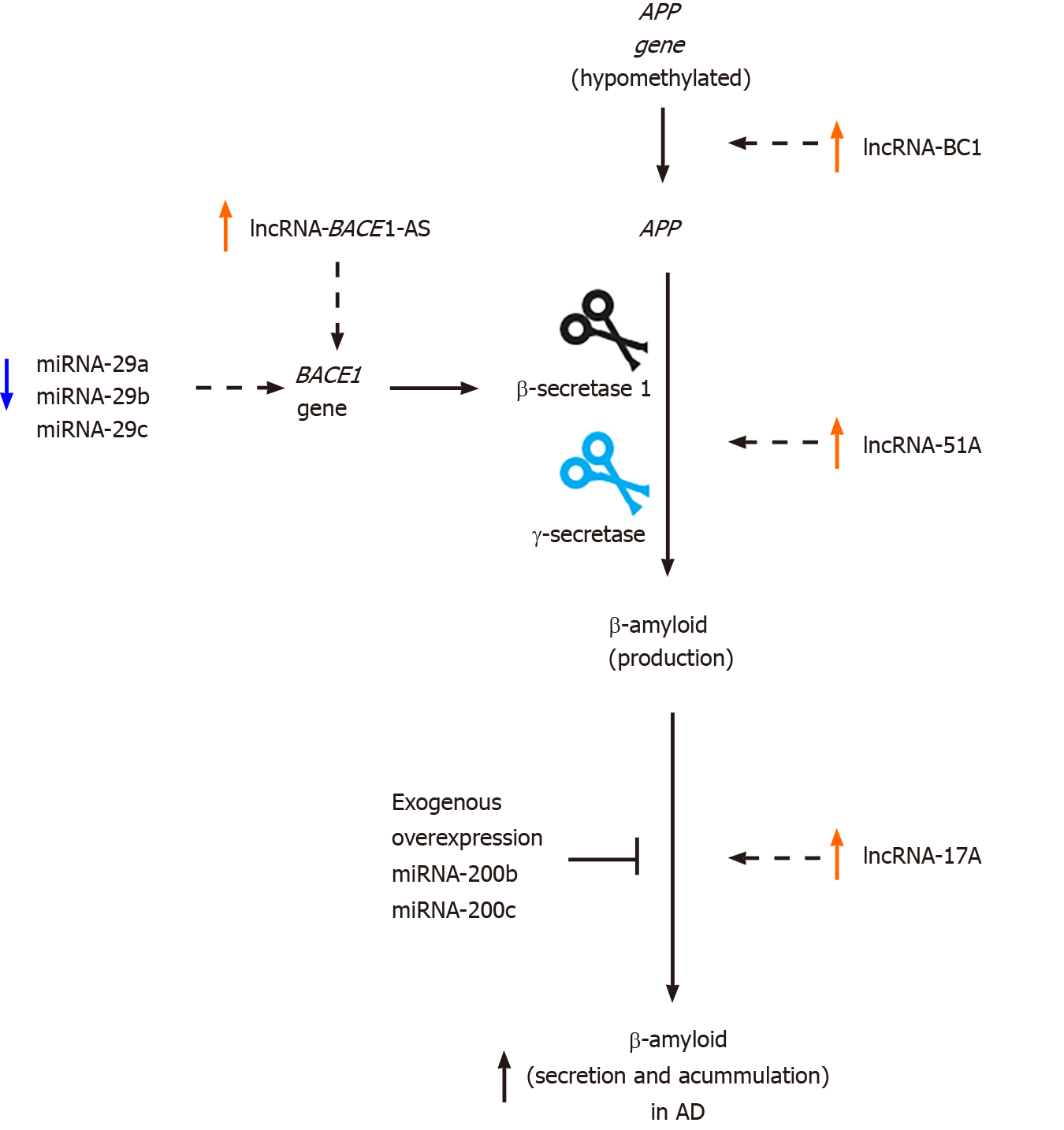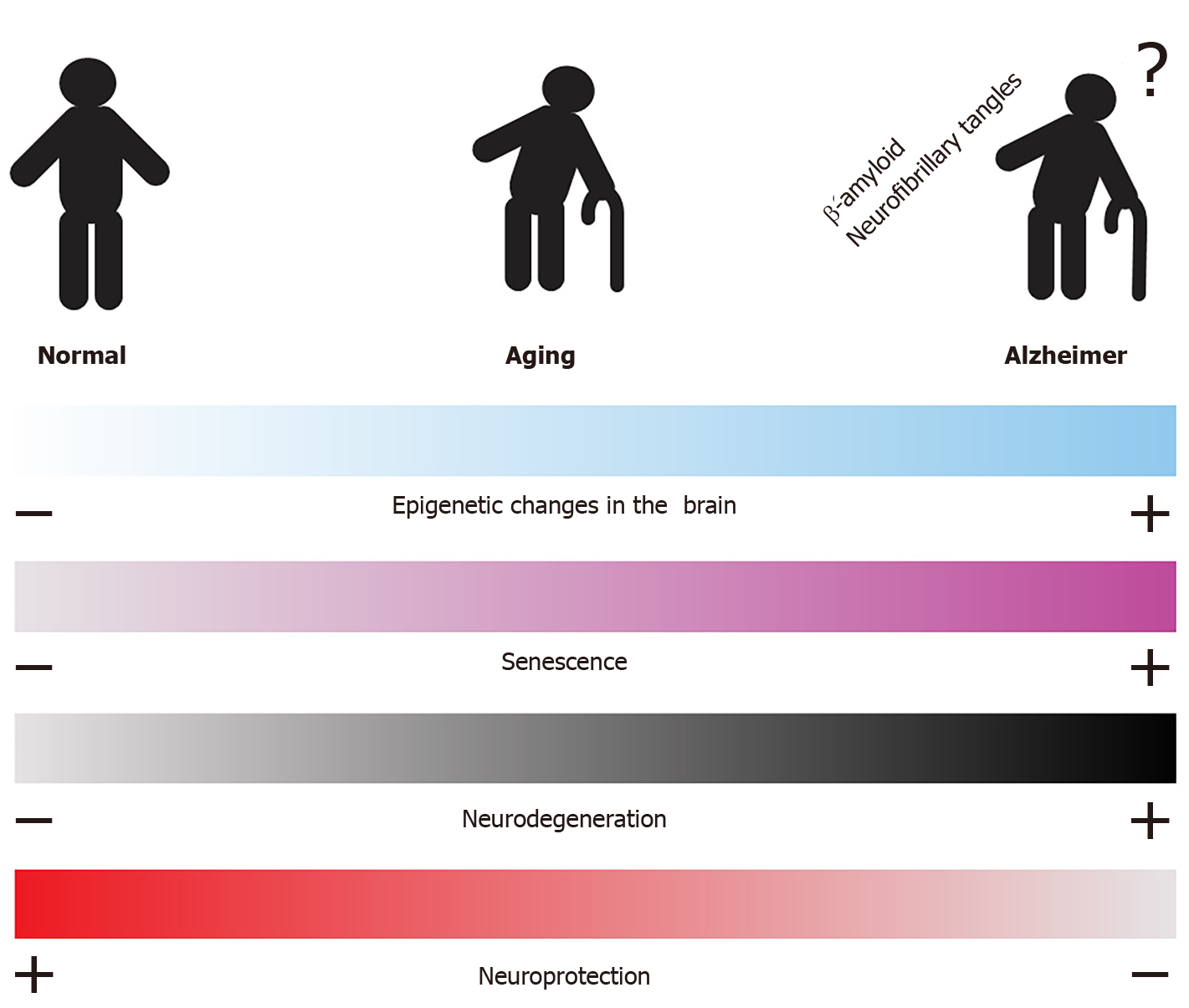Copyright
©The Author(s) 2020.
World J Biol Chem. Sep 27, 2020; 11(2): 62-75
Published online Sep 27, 2020. doi: 10.4331/wjbc.v11.i2.62
Published online Sep 27, 2020. doi: 10.4331/wjbc.v11.i2.62
Figure 1 Epigenetics modifications associated with Alzheimer disease.
Acetylation and de-acetylation of histones (left), deoxyribonucleic acid methylation status (middle, bottom) and the expression of non-coding ribonucleic acid (RNA) [short (miRNAs) and long (lncRNAs)] (right) are altered in Alzheimer disease. HDAC: Histone deacetyltransferase; DNA: Deoxyribonucleic acid; RNA: Ribonucleic acid; mRNA: Messenger RNA; miRNA: MicroRNA; lncRNA: Long non-coding RNAs.
Figure 2 Epigenetics changes in Alzheimer disease.
Alterations in epigenetic mark patterns are observed in the brain (primarily the hippocampus, cortex) and peripheral blood (1) under Alzheimer disease conditions in comparison to normal conditions. HDAC: Histone deacetyltransferase; DNA: Deoxyribonucleic acid; miRNA: MicroRNA; lncRNA: Long non-coding RNAs; 5-mC: 5-methylcytosine; 5-hmC: 5-hydroxymethylcytosine.
Figure 3 Regulation of β-amyloid production pathway and its epigenetic alterations.
The deregulation of some miRNAs and some epigenetic modifications increase the production, secretion, and accumulation of β-amyloid. Furthermore, some long non-coding RNAs (lncRNA), such as lncRNA-51A, lncRNA-BC1, lncRNA-17A and lncRNA-BACE-AS are involved in the overproduction of β-amyloid. Pink and blue arrows indicate an increase and decrease of expression, respectively. AD: Alzheimer disease; APP: β-amyloid precursor protein; lncRNA: Long non-coding RNAs; miRNA: MicroRNA.
Figure 4 Relevance of epigenetics in aging, neurodegeneration, and Alzheimer disease.
Changes in the epigenomes are detected during aging, from young to older people, and in Alzheimer disease (AD) patients. The senescent cells are accumulated during aging. The expression of genes associated with neurodegeneration is increased, whereas the expression of genes associated with neuroprotection is decreased during aging. All these changes are increased in AD patients. A connection between these processes may be critical in aging and during the progression of AD.
- Citation: Tecalco-Cruz AC, Ramírez-Jarquín JO, Alvarez-Sánchez ME, Zepeda-Cervantes J. Epigenetic basis of Alzheimer disease. World J Biol Chem 2020; 11(2): 62-75
- URL: https://www.wjgnet.com/1949-8454/full/v11/i2/62.htm
- DOI: https://dx.doi.org/10.4331/wjbc.v11.i2.62












